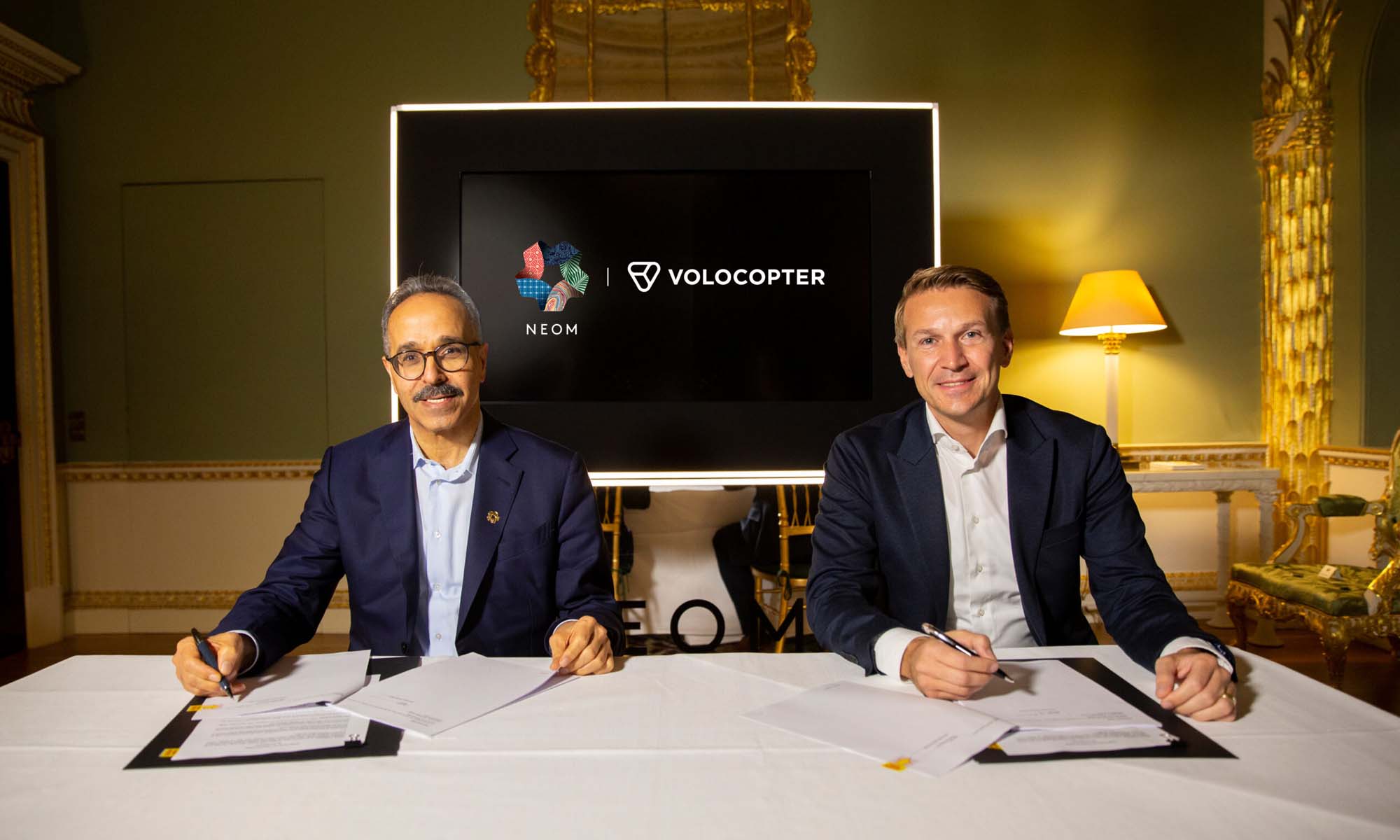News
NEOM And Volocopter Partner To Create World’s First Bespoke Public eVTOL Mobility System
These first eVTOL aircraft will connect NEOM’s core urban development, called the Line, with other regional destinations.

The concept of electric vertical take-off and landing (eVTOL) aircraft should be familiar to all fans of sci-fi literature, movies, and video games.
Because of their ability to take off and land vertically, such aircraft are suited for operation in densely populated urban areas that would easily trap even small airplanes. Since eVTOL aircraft rely on electric propulsion, they generate much less noise pollution compared with traditional helicopters.
Now, Volocopter, a German eVTOL aircraft manufacturer based in Bruchsal has established a joint venture (JV) company with NEOM, a planned smart city in the Tabuk Province of northwestern Saudi Arabia that aims to realize a daring vision of what the future could be.

The goal of the new company is to design, implement, and operate the world’s first bespoke public vertical mobility system in NEOM. Once operational, the system will provide air taxi and logistics services and integrate with the rest of NEOM’s multi-modal and zero-emissions public mobility system.
“We are incredibly excited and proud to partner with Volocopter to make vertical mobility a reality here at NEOM. Volocopter is internationally recognized for leading innovation in the eVTOL industry and is a perfect match for our ambitious goals to create the first truly sustainable, shared, and seamlessly integrated mobility system in the world” said Florian Lennert, Head of Mobility, NEOM.
Read More: SpaceX Inspiration4 Tourists Share Incredible Photos Of Earth
The JV has so far ordered 10 VoloCity passenger and 5 VoloDrone logistics aircraft from Volocopter, and plans are already in place to scale up activities from the beginning of 2022.
These first eVTOL aircraft will connect NEOM’s core urban development, called the Line, with other regional destinations. The Line is supposed to be a 170 km long linear city without conventional cars, and it will be home to over 1 million citizens when finished.
News
Google Releases Veo 2 AI Video Tool To MENA Users
The state-of-the-art video generation model is now available in Gemini, offering realistic AI-generated videos with better physics, motion, and detail.

Starting today, users of Gemini Advanced in the MENA region — and globally — can tap into Veo 2, Google’s next-generation video model.
Originally unveiled in 2024, Veo 2 has now been fully integrated into Gemini, supporting multiple languages including Arabic and English. The rollout now brings Google’s most advanced video AI directly into the hands of everyday users.
Veo 2 builds on the foundations of its predecessor with a more sophisticated understanding of the physical world. It’s designed to produce high-fidelity video content with cinematic detail, realistic motion, and greater visual consistency across a wide range of subjects and styles. Whether recreating natural landscapes, human interactions, or stylized environments, the model is capable of interpreting and translating written prompts into eight-second 720p videos that feel almost handcrafted.
Users can generate content directly through the Gemini platform — either via the web or mobile apps. The experience is pretty straightforward: users enter a text-based prompt, and Veo 2 returns a video in 16:9 landscape format, delivered as an MP4 file. These aren’t just generic clips — they can reflect creative, abstract, or highly specific scenarios, making the tool especially useful for content creators, marketers, or anyone experimenting with visual storytelling.
Also Read: Getting Started With Google Gemini: A Beginner’s Guide
To ensure transparency, each video is embedded with SynthID — a digital watermark developed by Google’s DeepMind. The watermark is invisible to the human eye but persists across editing, compression, and sharing. It identifies the video as AI-generated, addressing concerns around misinformation and media authenticity.
While Veo 2 is still in its early phases of public rollout, the technology is part of a broader push by Google to democratize advanced AI tools. With text-to-image, code generation, and now video creation integrated into Gemini, Google is positioning the platform as a full-spectrum creative assistant.
Access to Veo 2 starts today and will continue expanding in the coming weeks. Interested users can try it out at gemini.google.com or through the Gemini app on Android and iOS.


















